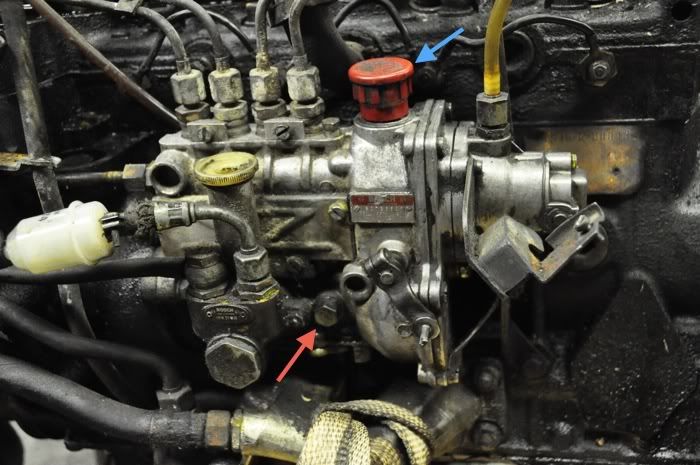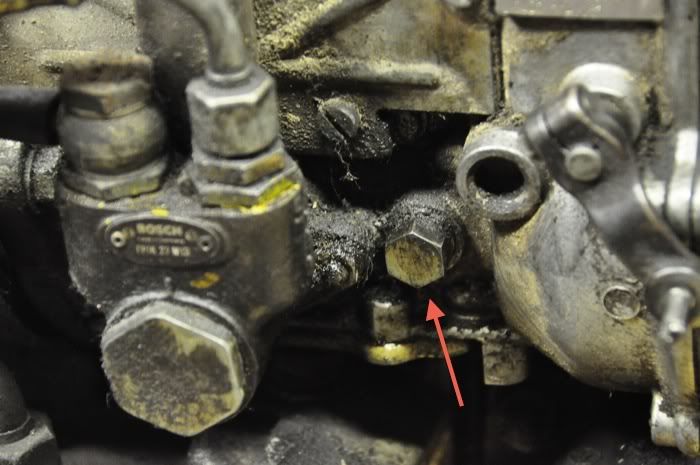 |
 |
 |
 |

|


|
|
|
|
|
|
#31
|
|||
|
|||
|
Hi everybody,
for the last few weeks, i've been pretty occupied by school, but I managed to find out that bosch charges a whopping 350 %  more for a diaphragm than the mercedes dealer! (60ish€ vs. 270€) more for a diaphragm than the mercedes dealer! (60ish€ vs. 270€)And in other news, I'm back to the point where it wont start again  It does fire after a lot of cranking, but it sounds miserable and dies again after a few secs. Does anybody know from expierience if it can be enrichened so much by the diaphragm, that it just wont be able to run? Greetings, moe 
|
|
#32
|
|||
|
|||
|
Maybe because of the torn diaphragm, the idle speed has been turned back by means of the screw of the air valve.
Did you change the diaphragm? What else was replaced/done? Does it glow normally? How long do you glow? Old glowers have to glow for about 30 seconds. The diaphragm cannot “enrich”: the mixture of a diesel engine is always lean. If you have a pneumatic governor and there is an air leak (such as a torn diaphragm), it can happen that the air valve is closed, so it is difficult to suck in air, while the control rod of the IP is too far in the full-load direction, that will result in smoke, but the engine will run. During starting you pull the lever of the IP in the start position, then the start quantity of fuel is injected, that is even more than the normal maximum amount of fuel. Non running of the engine usually means not enough diesel injected. |
|
#33
|
|||
|
|||
|
Quote:
|
|
#34
|
|||
|
|||
|
Quote:
so if i understand that correctly what you're saying is that it's simply impossible for a diesel to die from too much fuel? Are you 100% sure? (Also another thought that just occured: I filled the IP with oil, and I remember reading somewhere that it somehow gets rid of excess oil. Does it do that by injecting it? That would make too much fuel very possible.) I'm just asking this question specifically, because I don't want to go about changing the diaphragm for a lot of money just to have a non-running engine afterwards and another problem to fix  Quote:
 and the inside AFTER cleaning it with sand paper:   after replacing them it turned a lot faster. 
|
|
#35
|
|||
|
|||
|
Today I took out the IP vacuum regulator, cleaned it and visually inspected the diaphragm - not only did it look ok, but it also held vacuum quite well after I put it back together
 (tested it with the thumb on vacuum connection method) I also adjusted the gorilla knob a bit, I wasn't sure if it was too far in at the "running" position. Sadly I couldn't try to start it afterwards, the battery's empty. But I was going to properly adjust the valves tomorrow, and replace the two other faulty glowplugs, maybe they somehow affect compression? Wouldn't surprise me with bubbles already forming at the seams  Oh and FYI: the idle adjust screw still had factory paint on it - I don't think it has been turned. |
|
#36
|
|||
|
|||
|
If the glow plugs seal, they won't affect compression, even if they are broken.
As the diaphragm wasn't torn and the governor vacuum chamber holds vacuum, there was no need to adjust the idle. The gorilla knob cable should pull on the lever when in the starting position and push on the lever when in the stop position. When at the drive or glow position, the lever should not be actuated. You can try pushing the accelerator pedal a bit during and after starting. Don't high rev the engine before there is oil pressure. Quote:
The IP has its own oil supply, that should be changed every time you change the engine oil. Unscrew the level screw (it is hollow, so don't need to remove it entirely) and let diesel/oil leak out. Have some rags ready. The screw is at the red arrow in the picture below:  Close-up:  Unscrew the red filling cap (blue arrow), pour in engine oil until fresh engine oil comes from the level screw. That usually takes about 200 ml or 6–8 fluid oz. Screw back the level screw and put back the red cap and you are done. There is a vent tube at the back of the pump, if the level of oil/diesel rises too much, it will come out of this vent tube. Last edited by Govert; 10-27-2012 at 02:51 PM. |
|
#37
|
||||
|
||||
|
Any changes???
__________________
1978 300SD 'Phil' - 1,315,853 Miles And Counting - 1, 317,885 as of 12/27/2012 - 1,333,000 as of 05/10/2013, 1,337,850 as of July 15, 2013, 1,339,000 as of August 13, 2013 100,000 miles since June 2005 Overhaul - Sold January 25th, 2014 After 1,344,246 Miles & 20 Years of Ownership 
|
|
#38
|
|||
|
|||
|
Sorry, I haven't updated this thread in a while, since I was busy with school
 Also it blew another glow plug wich was getting annoying, so I ordered four new ones, and today it finally STARTED UP again  I did however run it off a can of diesel purge, and it started much quicker on that than with the normal fuel line connected to the tank. My thinking is that either the diesel pump is shot, or the fuel line is plugged/has a leak. Doesn't matter, since I plan on replacing ALL steel lines on the car eventually. My biggest concern right now is the surging at idle speed, wich is quite hefty. I'm going to measure the fuel consumption at idle again on the weekend, because it still smokes black like crazy, and I suspect that there is way too much fuel injected. Edit: I forgot to mention, the smoke signals the diesel produced attracted a arab fella in an audi A6 who wanted to buy the 200D/My Mum's Opel Combo/My 230E, to all of wich I responded with no.  Edit2: I inspected the Diaphragm both visually and with the 'thumb on vacuum line connection method', and it seems to be ok 
|
|
#39
|
|||
|
|||
|
Did you hear the click when you removed your thumb? Even after some time? Try it after 15, 30, 45 and 60 seconds. Smoke and surging suggests a vacuum leak. Did you adjust the linkage according to specs?
|
|
#40
|
|||
|
|||
|
Adjusting the linkage along with the valves (again) is next on my list, and I'm going to test the governor again at those time intervals according to your post.
Very good writeup by the way 
Last edited by Mojoan; 11-07-2012 at 05:12 PM. |
|
#41
|
|||
|
|||
|
I fired it up and moved it into the garage today, which was no problem even at 0° Celcius
 I then tried adjusting the throttle linkage, but the german instructions I used weren't really suited. I did however manage to get it running sorta right by depressing the IP lever manually. I'll try to adjust it according to the manual on Thatcher Mathias' site. And I tested the vacuum in the IP regulator again today, this time while looking at the clock. It only holds vacuum for a dissapointing ~8 seconds. If it's just a bad seal between the two housings, i will try to smear a little grease in there, and try again afterwards. If that doesnt help than a new diaphragma will be ordered. But before any of that, there is a) the end of the world, or if a doesnt happen b) Christmas  So happy holidays to all of you 
|
|
#42
|
|||
|
|||
|
Quote:
|
|
#43
|
|||
|
|||
|
Thanks for the tip - I think I know which axle you are talking about. Definetly worth a try.
|
|
#44
|
|||
|
|||
|
Black smoke = too much fuel. White (pure white) smoke which disipates into thin air = steam. Whitish (bluish) smoke that wafts away in the wind or hangs around = unburned fuel/oil burning.
Black smoke without the engine exceeding idle, and assuming good compression/mechanicals, is most likely a bad injector or something at the IP such as a stuck delivery valve. The cylinder responsible "may" be able to be isolated by cracking individual lines at each injector, in turn, and listening to the engine and watching the exhaust. Black smoke could also be caused by air getting into the pump and the air can delay injection because of contraction, then diesel (explode) inside the injection line and blow excess fuel into the cylinder late, and cause all kinds of weird running problems. That it ran better on the purge may in fact point to that issue. |
|
#45
|
|||
|
|||
|
Quote:
I tried dropping some oil on there, and it held vacuum for about 30 sec. and maybe more, but I couldn't test it for a longer timespan because my finger was freezing off.  Is there any way to get a proper seal at the axle? |
 |
| Bookmarks |
|
|